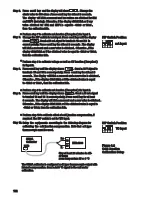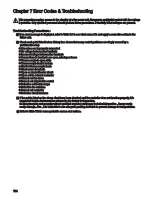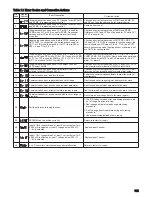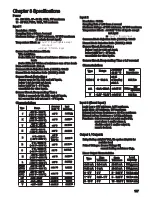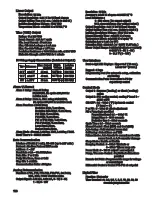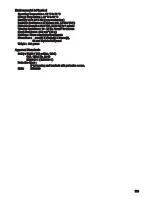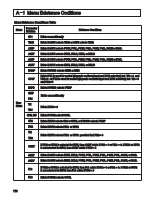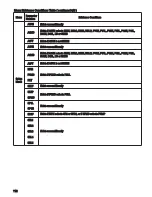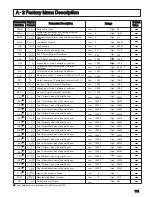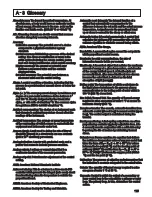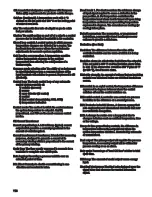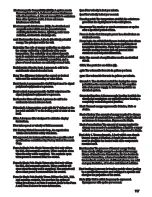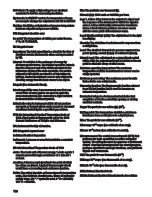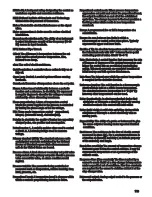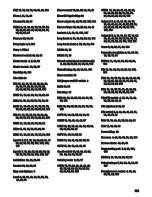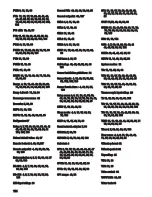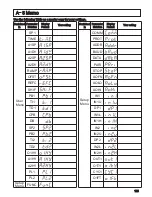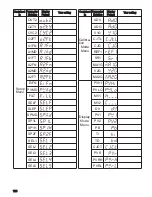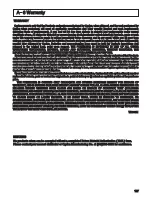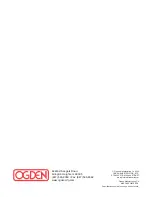
Celsius: (Centigrade) A temperature scale with 0 °C
defined as the ice point and 100 °C as the boiling point
of water at sea level.
Celsius: (Centigrade) A temperature scale with 0 °C
defined as the ice point and 100 °C as the boiling point
of water at sea level.
CE: A mark that designates compliance with European
Union (EU) requirements for products sold in Europe.
CE: A mark that designates compliance with European
Union (EU) requirements for products sold in Europe.
Chatter: The rapid cycling on and off of a relay in a control
process due to insufficient bandwidth in the controller.
Chatter: The rapid cycling on and off of a relay in a control
process due to insufficient bandwidth in the controller.
cfm: The volumetric flow rate of a liquid or gas in cubic
feet per minute.
cfm: The volumetric flow rate of a liquid or gas in cubic
feet per minute.
Closed loop control: A control system in which process
temperature changes are detected by a sensor. The
feedback from the sensor allows the control make
adjustments for accurate system regulation.
Closed loop control: A control system in which process
temperature changes are detected by a sensor. The
feedback from the sensor allows the control make
adjustments for accurate system regulation.
Cold junction compensation: A temperature sensitive
device that prevents changes in the ambient
temperature from affecting the cold junction of a
thermocouple.
Cold junction compensation: A temperature sensitive
device that prevents changes in the ambient
temperature from affecting the cold junction of a
thermocouple.
Common mode rejection ratio: The ability of an instrument
to reject interference from a common voltage at the
input terminals with relation to ground. Expressed in dB
(decibels).
Common mode rejection ratio: The ability of an instrument
to reject interference from a common voltage at the
input terminals with relation to ground. Expressed in dB
(decibels).
Control loop: The basic control loop of any automatic
control system consists of:
1) variable (process)
2) sensor
3) error detector (of control)
4) control
5) final control element (relay, SSR, SCR)
6) temperature indication
Control loop: The basic control loop of any automatic
control system consists of:
1) variable (process)
2) sensor
3) error detector (of control)
4) control
5) final control element (relay, SSR, SCR)
6) temperature indication
Control mode: The method in which the control restores
the system temperature to set point. On/Off,
proportional, and PID are the most common control
modes.
Control mode: The method in which the control restores
the system temperature to set point. On/Off,
proportional, and PID are the most common control
modes.
CT: Current Transformer
CT: Current Transformer
Current proportioning: A 4-20 milliamp (typical) current
output which provides a current proportional to the
amount of control required.
Current proportioning: A 4-20 milliamp (typical) current
output which provides a current proportional to the
amount of control required.
Current transformer: A transformer, intended for measuring
purposes, designed to generate a current at its
secondary winding which is proportional to the current
at the primary winding.
Current transformer: A transformer, intended for measuring
purposes, designed to generate a current at its
secondary winding which is proportional to the current
at the primary winding.
Cycle time: The time usually expressed in seconds for a
controller to complete one on/off cycle.
Cycle time: The time usually expressed in seconds for a
controller to complete one on/off cycle.
DC: Direct Current; An electric current flowing in one
direction and constant in value.
DC: Direct Current; An electric current flowing in one
direction and constant in value.
Data logging: Recording a process variable over an
extended period of time.
Data logging: Recording a process variable over an
extended period of time.
Deviation alarm: An offset value that follows the set point.
If the set point is 350 °F and the Deviation alarm value
is +20 F, the alarm value would be 350 °F plus 20 °F
(or 370 °F), See Process alarm.
Deviation alarm: An offset value that follows the set point.
If the set point is 350 °F and the Deviation alarm value
is +20 F, the alarm value would be 350 °F plus 20 °F
(or 370 °F), See Process alarm.
Deviation: The difference between the value of the
controlled variable and the value at which it is being
controlled.
Deviation: The difference between the value of the
controlled variable and the value at which it is being
controlled.
DIN: Deutsche Industrial Norms. A German agency that
sets engineering and dimensional standards that now
has worldwide recognition.
DIN: Deutsche Industrial Norms. A German agency that
sets engineering and dimensional standards that now
has worldwide recognition.
Dielectric strength: An amount of voltage that an insulating
material can withstand before an electrical breakdown
occurs.
Dielectric strength: An amount of voltage that an insulating
material can withstand before an electrical breakdown
occurs.
Differential: In an on/off control, the temperature difference
expressed in degrees between where the control
switches off and the control switches on.
Differential: In an on/off control, the temperature difference
expressed in degrees between where the control
switches off and the control switches on.
Differential control: A controller can control one process
in relation to the difference of a second process.
Differential control: A controller can control one process
in relation to the difference of a second process.
Drift: A change in a value over a long period due to
changes in factors such as ambient temperature, time
or line voltage.
Drift: A change in a value over a long period due to
changes in factors such as ambient temperature, time
or line voltage.
Electrical interference: Electrical noise induced upon the
signal wires that obscures the wanted information
signal.
Electrical interference: Electrical noise induced upon the
signal wires that obscures the wanted information
signal.
Efficiency: The amount of useful output versus energy
input.
Efficiency: The amount of useful output versus energy
input.
116
Dual output: The primary output will regulate the process
temperature. A secondary output will be utilized for
process cooling or as an alarm.
Dual output: The primary output will regulate the process
temperature. A secondary output will be utilized for
process cooling or as an alarm.
Droop: In time proportioning controls, the difference in
temperature between the set point and where the
system temperature stabilizes. Corrected by automatic
or manual reset.
Droop: In time proportioning controls, the difference in
temperature between the set point and where the
system temperature stabilizes. Corrected by automatic
or manual reset.
Dead band: 1. For chart recorders: the minimum change
of input signal required to cause a deflection in the
pen position. 2. For temperature controllers: the
temperature band where heat is turned off upon rising
temperature and turned on upon falling temperature
expressed in degrees. The area where no heating (or
cooling) takes place.
Dead band: 1. For chart recorders: the minimum change
of input signal required to cause a deflection in the
pen position. 2. For temperature controllers: the
temperature band where heat is turned off upon rising
temperature and turned on upon falling temperature
expressed in degrees. The area where no heating (or
cooling) takes place.
Derivative: (See Rate)
Derivative: (See Rate)
Default parameters: The parameters, or programmed
instructions, permanently stored in microprocessor
software to provide a data base.
Default parameters: The parameters, or programmed
instructions, permanently stored in microprocessor
software to provide a data base.
Duty cycle: Percentage of "load ON time" relative to total
cycle time.
Duty cycle: Percentage of "load ON time" relative to total
cycle time.

